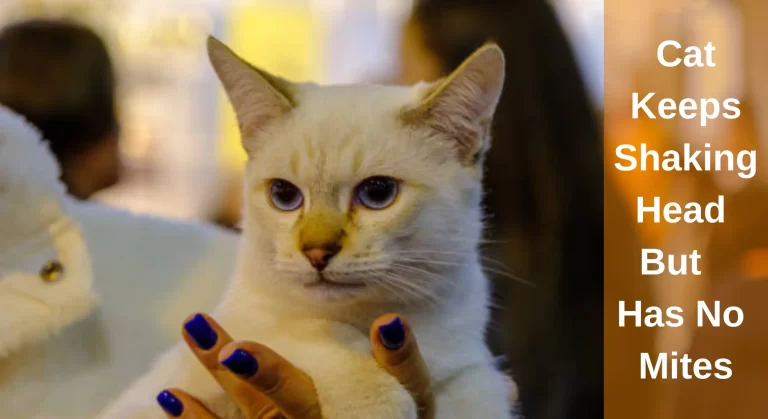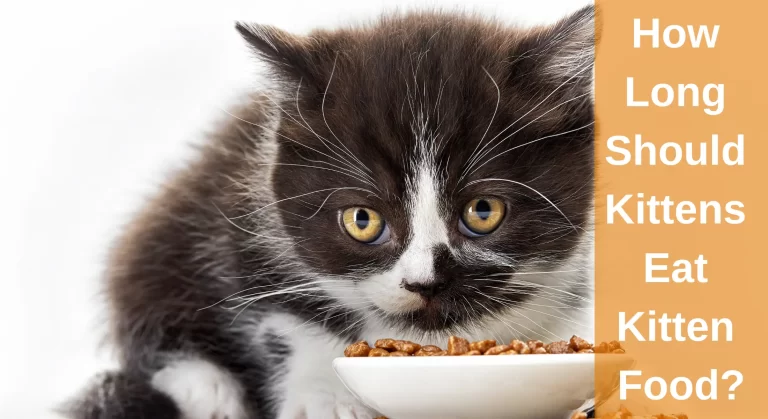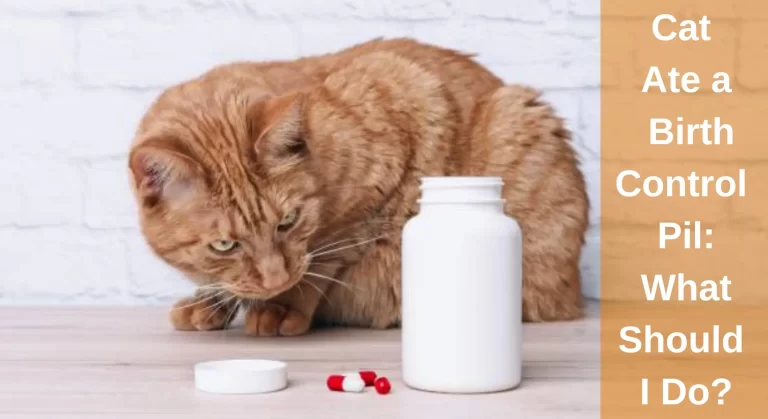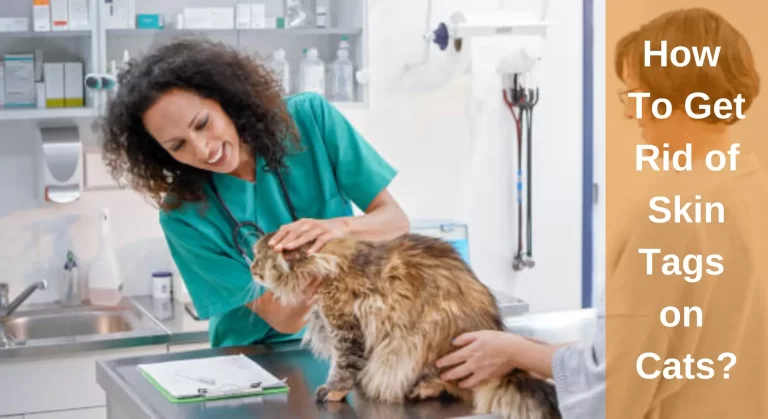What Can I Use Instead Of Cat Litter? Top 13 Budget-Friendly Cat Litter Alternatives
There are a variety of reasons why people look for cat litter alternatives. Have you ever pondered the outrageous prices of cat litter when standing at a pet store? Purchasing commercial litter may be incredibly expensive, and things get considerably trickier if you have a lot of furry companions.
Other types of litter may enable you to live a more sustainable lifestyle, save money, protect the environment, and prevent health issues for both you and your cat.
There are a number of less expensive, environment-friendly, and widely accessible alternatives to kitty litter like wood shavings, wood pellets, walnut grass, sawdust, wastepaper-based litter, sand, poultry feed, and corn cob cat litter. The best option for your cat will depend on factors such as their preferences, any health concerns, and your personal preferences for things like odour control, absorption power, and clumping ability. It is important to research and consider the pros and cons of each alternative before making a decision.
In order to simplify your life, I’ve identified the top solutions in this post. In this comprehensive guide, we will explore the different types of cat litter alternatives and provide tips on how to choose the best one for your cat.
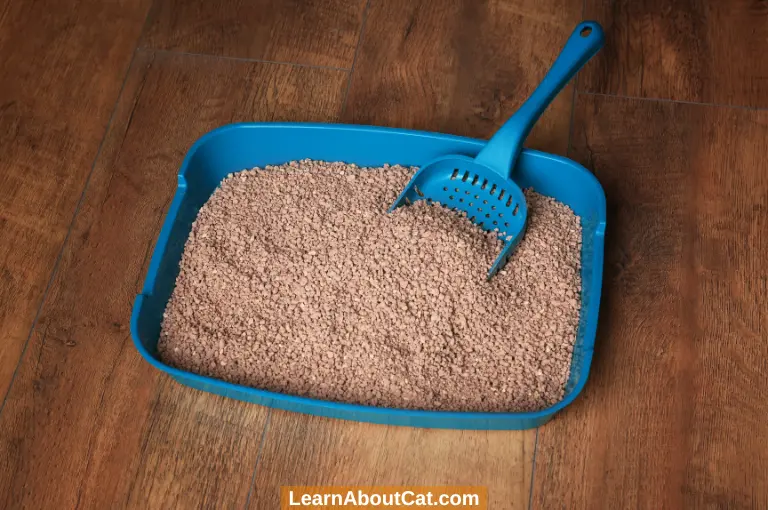
Why Exploring Alternative Cat Litter Options is Important
Exploring alternative cat litter options is important for several reasons. First, it can reduce your cat’s environmental impact. Many alternative cat litter options are biodegradable or made of recycled materials, making them more eco-friendly than traditional litter.
Second, it can improve your cat’s health and comfort. Alternative cat litters can be more natural and less harmful to your cat’s respiratory system than traditional litter.
Finally, exploring alternative cat litter options can save you money in the long run, as many alternative litters are more affordable and require less frequent replacement.
Check Out: The Ultimate Guide to How to Get Rid of Cat Pee Smell
What Can I Use Instead Of Cat Litter? Discovering the Best Alternatives to Cat Litter
If you’re looking for kitty litter substitutes, we can assist. Here are a few unusual and even original kitty litter replacements that you might not have thought of on your own.
1. Walnut Litter
Walnut shells are a natural alternative to traditional cat litter that is biodegradable and eco-friendly. They are absorbent, control odour, and are gentle on cats’ paws. Walnut shells also clump together when wet, making them easy to scoop out and dispose of. Although it’s neither homemade nor free, this item is nonetheless excellent.
To use walnut shells as cat litter, you will need to prepare them by crushing them into small pieces. This will help them to clump together when wet and make it easier to scoop out and dispose of.
Lumpy walnut litter collects and savours the scent. You may choose from a number of litter granulations that the manufacturers offer to find the one that works best for you. The best grains are the ones that cluster together and are easiest to clean.
2. Wastepaper (Paper-Based Cat Litter)
Paper-based cat litter is another natural alternative to traditional cat litter that is made from recycled paper products. One option is to use old newspapers and junk mail to create your own cat litter.
To make your own litter, start by shredding the paper and placing it in the litter box. Next, mix the shredded paper with water and dish soap and let it sit for a few minutes. Once it has soaked, drain the mixture to remove the soap and sprinkle baking soda on top. Take the litter box outside and let it dry in the sun. Once it has dried completely, the litter is ready to use.
Using a paper shredder will make the process of creating this type of litter much easier and more efficient, resulting in a more uniform texture. However, if you don’t have a shredder, you can still shred the paper by hand or using scissors.
By using this alternative cat litter, not only are you reducing your carbon footprint by repurposing old paper, but you’re also saving money by not having to buy traditional cat litter. Plus, paper-based cat litter is also low-dust, which makes it great for cats with respiratory problems, you can rest easy knowing that you’re not exposing your furry friend to any harmful chemicals that may be present in commercial cat litter.
So, next time you’re about to throw away old newspapers and junk mail, consider using them to make your own cat litter. Your wallet and the environment will thank you.
The fact that pet stores sell paper-based cat litter further demonstrates how useful this idea is. Additionally, doctors sometimes encourage owners to use paper as litter for cats who have recently had their claws removed or who have injured paws since the paper is so mild on a cat’s paw pads.
3. Wood Shavings
If you or someone you know does woodworking at home, you can collect the leftover shavings to repurpose as cat litter. Alternatively, you can obtain wood shavings at a low cost or even for free from a lumber company.
To use wood shavings as litter, simply add them to your cat’s litter box to a depth of around 3 inches. The natural scent of the wood will help mask any unpleasant odours from your cat’s urine.
Not only are wood shavings a budget-friendly option, but they are also environmentally friendly since they are a natural and renewable resource. Plus, they are biodegradable and can be composted after use.
One thing to keep in mind when using wood shavings is that they can be more prone to tracking outside of the litter box compared to other types of litter. However, this can be easily remedied by placing a litter mat underneath the box to catch any stray shavings.
4. Sand
Sand presents itself as a naturally occurring alternative to feline litter, obtainable and effortless to employ. It boasts impressive absorptive capacities that aid in odour regulation, and its wet consistency allows for cohesive clumping, facilitating effortless disposal. Sand makes for an ideal choice for felines with proclivities for burying their waste, granting them ample digging space.
If you choose to use a litter box, add some sand first, then some baking soda to help with odour absorption.
Several categories of sand exist, which cater to littering purposes: clay-based sand, silica-based sand, and quartz sand are among the finest options. Nonetheless, one must bear in mind that not all sand sorts are viable for feline littering. For example, beach sand is not an appropriate substitute for cat litter, given that it may contain harmful bacteria and parasites.
To avoid spills and simplify cleanup, place a rubber mat beneath your litter box. Use cardboard or any other flat, disposable, or sometimes washable material in its place if you don’t have a rubber mat.
Also Check Out: How to Keep Cat Litter Off the Floor?
5. Wood Pellets
You may give wood pellets for cat litter another try if you want something biodegradable. Wood pellets are another natural alternative to traditional cat litter that is made from compressed sawdust.
These pellets are crafted by compressing sawdust and offer highly effective absorption and odour-control properties, thereby rendering them a splendid option for feline owners. In addition, wood pellets are biodegradable, granting them the ability to be composted or disposed of in the trash. To
To use wood pellets as cat litter, you will need to prepare them by adding water to them. This will cause the pellets to break down into sawdust and become more absorbent. Once they’re ready, pour them into the litter box and let your cat do its business.
You Might Like to Read: Are Pine Pellets Safe for Cats? Things You Need To Know
6. Grass
Believe it or not, grass can be a great alternative to traditional cat litter. It’s free, readily available, and environmentally friendly. The grass is also absorbent and controls odour, making it a great choice for cat owners.
To use grass as cat litter, simply gather some fresh grass and put it in the litter box. Your cat may be hesitant to use it at first, but with some patience and training, it will eventually get used to it.
7. Artificial Turf
Artificial grass is one of the list’s more unusual choices. To use the grass as cat litter, just chop it up into smaller pieces and put it in the litter container. The grass is appealing to me since it looks lovely and is rather simple to maintain.
It can be found easily everywhere, including online. In addition, you won’t need to change it as frequently because it is made of durable material.
The main problem you can experience is your cat using artificial turf, which they might not like. They find trash, sand, and other analogous replacements to be more appealing than it is.
8. Corn Cob Litter
Corn cob litter is a non-natural alternative to traditional cat litter that is made from corn cobs. It is highly absorbent, controls odour, and is gentle on cats’ paws making it a great choice for cat owners. Corn cob litter also clumps together when wet, making it easy to scoop out and dispose of.
Corn cob litter is also biodegradable, which means it will break down naturally and won’t harm the environment.
To use corn cob litter, simply pour it into the litter box and let your cat do its business. However, it is important to note that some cats may be allergic to corn, so this may not be the best choice for all cats.
9. Small Animal Bedding
Cat litter may be replaced with small animal bedding, which is also widely available. Natural aspen shavings that have undergone thorough processing to eliminate dust and wood particles are typically used to make this type of bedding.
Small animal bedding is very absorbent and effective in eliminating the unpleasant odour of cat excrement and waste. To make sure the bedding you choose is safe for your cat to use, look for a brand that is devoid of chemicals and artificial colouring.
10. Sawdust
Sawdust, like wood shavings, can be repurposed as cat litter. You can obtain it from your own woodworking space or from a lumber company or wood furniture factory. However, it is important to note that sawdust should be used with caution as it may pose a health risk to your cat.
Sawdust with a coarse texture is the best type to use as cat litter. However, it is essential to consider the potential health hazards associated with its use. According to Cancer.org, sawdust is a known human carcinogen, which suggests that it may be harmful to cats as well, although this has not been scientifically proven.
To err on the side of caution, it is advisable to choose wood shavings over sawdust as cat litter. By doing so, you can be sure that you are not exposing your furry friend to any potential health risks.
Wood shavings are preferable over sawdust if both options are given. By producing your own cat litter in this way, you may rest easy knowing that you’re not putting your cat at risk.
11. Poultry Feed
If you’re looking for a unique and affordable cat litter option, consider poultry feed. This unconventional substitute is surprisingly effective and absorbent, making it a viable alternative for your litter box. Poultry feed in pellet form looks similar to traditional cat litter pellets and can be combined with baking soda to help control odours.
Poultry feed can be found at farm animal supply stores, usually sold in bulk, which can save you a considerable amount of money.
However, it’s important to note that using poultry feed as cat litter may attract insects and mice due to its composition of wheat, peas, milo, flaxseed, and alfalfa.
Despite this drawback, poultry feed is a cost-effective and eco-friendly option that can benefit both your cat and the environment. Additionally, some cat owners have reported that poultry feed is more efficient at absorbing liquid and controlling odour than traditional cat litter.
However, it’s important to introduce any new litter type gradually to ensure your cat is comfortable and doesn’t reject the new material.
12. Puppy Training Pads
If you have trouble getting your cat to use the litter box, you may want to consider using disposable training pads typically used for puppies. These pads can be found at most pet stores and are designed to absorb urine and control odours.
To use them, simply place the pads on the floor in an area that is convenient for your cat to access. If your cat uses the pad, reward him with praise or treats. However, make sure to supervise your cat around the pad to prevent them from playing with it or dragging it around the house.
It’s worth noting that while training pads can be a temporary solution for cats that refuse to use the litter box, they shouldn’t be used as a long-term alternative to cat litter. This is because they’re not biodegradable and can create a lot of waste.
13. Potting Soil
Cats are drawn to potting soil by nature, so you should only use it as a last option. However, using potting soil as cat litter can get messy, and your cat may track soil throughout your home.
It’s best to place the litter box in a designated area, such as the porch or laundry room, to minimize mess.
Furthermore, I advise against using potting soil since cats may spread germs all over the place, it doesn’t mask odours, and it might bring diseases into your house. You may try using potting soil from your garden inside your home, though, in an emergency.
What are the Benefits of Using a Cat Litter Substitute? Why Should I Use a Substitute For Cat Litter?
You might be asking what the advantages of an alternative are when there are so many easily available commercial cat litter solutions. It turns out that kitty litter options provide more advantages than you might be aware of. Just a handful of our favourites that could influence you are listed below:
There are several good reasons not to buy commercial kitty litter. These are what they include:

1. Costs
You may save money by choosing to make your own cat litter. Commercial cat litter may be expensive. The costs will surely rise because you’ll need to replace them regularly. The amount of money you spend on kitty litter each year could astound you.
2. Environmental Concerns
The clay required for kitty litter is obtained by strip mining, which destroys forests and animal habitats. Even though certain litters are labelled “flushable,” they may not be compatible with sewage systems, which might harm nearby rivers and water supplies.
3. Sustainability
If you wish to live a more sustainable and independent lifestyle, you should utilise fewer commercial products. Among them are cat litters made with a disregard for the environment.
By creating these DIY kitty litter alternatives, you can lessen your dependency on commercial litter.
4. Health Issues
Dangerous carcinogens may be present in some litters, particularly those formed of clay, which is able to move through the air on dust particles and perhaps be swallowed.
They could cause allergic reactions. Certain cat litter formulations have been known to cause asthma attacks in cats.
5. Emergency Situations
You may have discovered a cat litter product that is virtually perfect and defies all the other requirements stated above given that it is fairly priced, hypoallergenic, eco-friendly, and sustainable. In such a case, you might wish to stick with that specific kind of commercial cat litter.
However, even with the best intentions, emergency situations can arise where you unexpectedly run out of your cat’s preferred litter.
This is where knowing about alternative cat litter substitutes can come in handy. These substitutes can provide convenience and help you keep your cool when your feline friend is about to wreak havoc.
Intresting Reading: Can Cat Urine Cause Headaches? Hazards of Ammonia from Dirty Litter Boxes
Materials to Avoid Using in Place of Cat Litter
Despite the fact that they are on our list of alternatives above and may be favoured by certain cat owners, there are a few materials we would avoid using, and with good reason.
Potting Soil: Using potting soil as cat litter can result in a considerable mess and may lead to more problems than solutions. It can harbour germs, microbes, and other harmful substances that could be harmful to your cat’s health.
Some Wood Shavings: Not all wood shavings are safe for cats, especially those made from pine. Pine shavings contain phenols that can be toxic to cats, causing respiratory and other health problems. Therefore, it’s crucial to research the type of wood shavings before using them as litter substitutes.
How To Introduce Fresh Cat Litter?
Cats are notoriously finicky creatures and can have difficulty adjusting to changes, especially when it comes to their litter. A sudden change in a litter may cause your cat to refuse to use the litter box, which can create a frustrating problem for you both. However, there are ways to avoid this issue by introducing the new litter gradually.
Check Out: How To Train a Cat to Use a Litter Box?
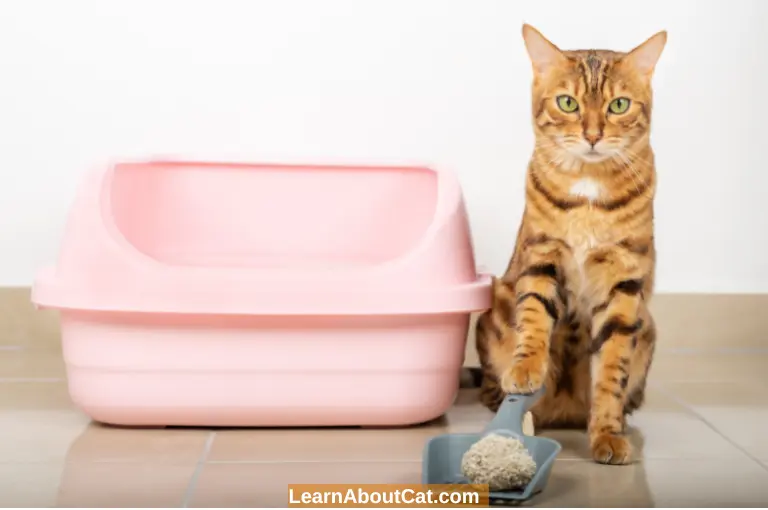
Start by adding a small amount of the new litter alternative to your usual cat litter. This way, your cat can get used to the new scent and texture gradually. Over time, decrease the amount of regular litter and increase the new litter until you have fully switched over.
Alternatively, you could consider toilet training your cat. While this option may require more effort and patience, many cat owners have successfully trained their cats to use human toilets.
To increase your chances of success, consider using a cat toilet training kit, which can be effective for many pet owners. If you decide to proceed in that way, we wish you luck!
Find Out: Why Does My Cat’s Poop Smell So Bad? Causes and Remedies
Frequently Asked Questions
Can I flush walnut shells down the toilet?
No, walnut shells should not be flushed down the toilet as they can clog pipes.
How often should I change the cat litter substitute?
It is recommended to change the cat litter substitute every 1-2 days to ensure maximum odour control and hygiene. However, this can vary depending on the type of litter, the number of cats you have, and your cat’s habits.
Is it safe to use natural cat litter?
Yes, natural cat litter options are generally safe for use. However, it is important to read the manufacturer’s instructions and ensure proper disposal of used litter.
Are there any health risks associated with using alternative cat litter?
It’s always important to do your research and choose alternative litters that are safe for cats. Some types of cat litter, such as those made from clay or silica gel, can pose respiratory problems for cats. Additionally, litter made from certain materials, such as pine or cedar, can cause allergies or toxicity.
Can I flush alternative cat litters down the toilet?
It’s not recommended to flush any cat litter down the toilet, including alternative litters. Many alternative litters are not biodegradable and can cause blockages in pipes and harm to the environment.
Will my cat be able to use alternative litters without training?
It may take some patience and training to get your cat to use alternative litters. Cats can be creatures of habit and may prefer certain textures or scents. Gradually introduce the new litter and be sure to praise your cat for using it.
Can I mix alternative litter with traditional cat litter?
It’s not recommended to mix different types of litter as it can confuse your cat and make them less likely to use the litter box. Stick to one type of litter at a time.
What is the best cat litter for kittens?
For kittens, it’s best to choose a litter that is unscented, non-clumping, and dust-free. Additionally, litter made from natural materials, such as corn or wheat, can be a good option for kittens with sensitive skin.
Conclusion
Exploring alternative cat litter options is important for a variety of reasons. Traditional clay litter can have downsides such as environmental impact, health concerns, and unpleasant odours.
You’ll have the best options ready the next time you ask yourself, “What can I use instead of kitty litter?”
There are plenty of cat litter alternatives that you can use if you want to switch things up for your furry friend. From wood shavings and sawdust to grass and potting soil, each alternative has its own pros and cons. So it is important to research and consider factors such as odour control, absorption power, clumping ability, dust, and price when choosing a cat litter alternative. With the right choice, both cats and their owners can be happy with the litter they use.
Remember, if you’re ever unsure about whether a particular alternative is safe for your cat, consult with your veterinarian first. By exploring different cat litter alternatives, you may even find a new solution that works better than traditional cat litter. So, don’t be afraid to get creative and try something new!
Now that you’ve read about them all, do you think at least one of these options will work for you and your animal friend? Why not give one of the most affordable, ecologically friendly, and sustainable cat litter alternatives a try?
Related Posts
- The Ultimate Guide to How to Get Cat Pee Out of a Couch? [Easy Methods]
- Why Is My Cat Peeing on the Bed or Couch? And How To Stop
- Litter Box Ideas for Multiple Cats – Top Solutions
- Top Entry Litter Box Pros And Cons
- Litter Deodorizer vs Baking Soda: Which is Best for My Cat and Me
- How Do Cats Know Where the Litter Box Is?
Who is Isabella?
My name is Isabella, and I am a dedicated and knowledgeable cat enthusiast. With years of experience caring for cats and a deep love for felines, I made a mission to help other cat lovers navigate the challenges of cat ownership.


